Mark VIII Tank
This WW1 Surviving 301st Tank Battalion (Heavy) American Army Mark VIII International 'Liberty' Tank can be found at the Fort George G. Meade Museum, MD, USA. It is one of three surviving Mk VIII tanks left in the world. This tank was built at Rook Island Arsenal in 1920 ORD No. 68016
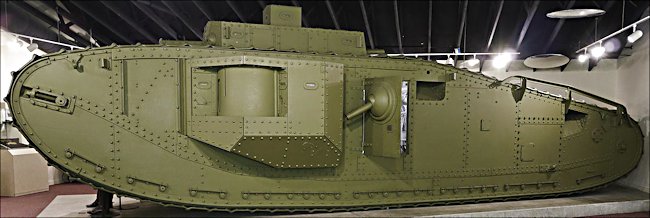
WW1 Mark VIII 'Liberty' Tank at Fort George G. Meade, MD, USA
A number of faults have been highlighted by British and American tank crews after the deployment on the World War I battlefield of the British Mark V tank. A committee was formed of senior officers and engineers from both armies to trying come up with a new tank design, that would overcome some of the problems of previous tank designs.
The finished tank would be called the Mark VIII. It was the first Anglo-American tank design. It was sometimes known as "the International" or as "the Liberty". The idea was that this armoured combat vehicle would equip the armies of France, Britain and America during 1918, and when there were sufficient numbers, they would be part of a mass armoured attack on German fortifications in 1919. The end of the war in 1918 stop the production of the Mark VIII tank.
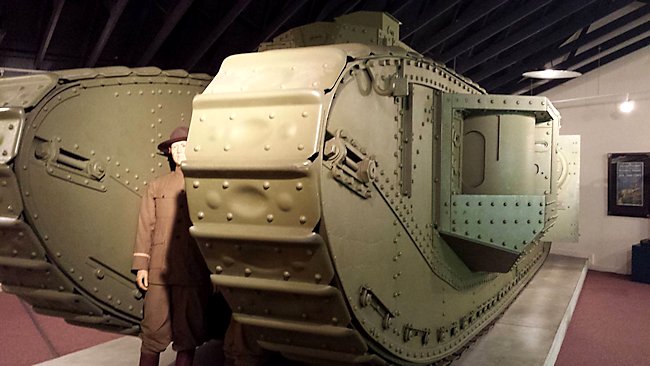
WW1 Mark VIII 'Liberty' Tank at Fort George G. Meade, MD, USA
Only 125 were produced before the end of the war. They were made by the North British Locomotive Company in the United Kingdom and also the Rock Island Arsenal in America. The most striking feature of this tank was its length. The Germans had been continually increasing the width of their defensive trenches to negate the trench crossing ability of the British tanks. The Mark VIII tank was 34 feet 2 inches long. The Mark V British tank was only 26 feet 5 inches long.
The Mark VIII tank was armed with two QF 6pdr (57mm) Hotchkiss guns, one on each side. Depending on availability, they were also armed with seven 7.92mm Hotchkiss machine guns or five M1917 Browning machine guns. The V-12 Liberty or Ricardo engine enabled the tank to have a maximum road speed of 5.25mph. The speed was much reduced when crossing rough battlefield muddy artillery shells scarred landscape.
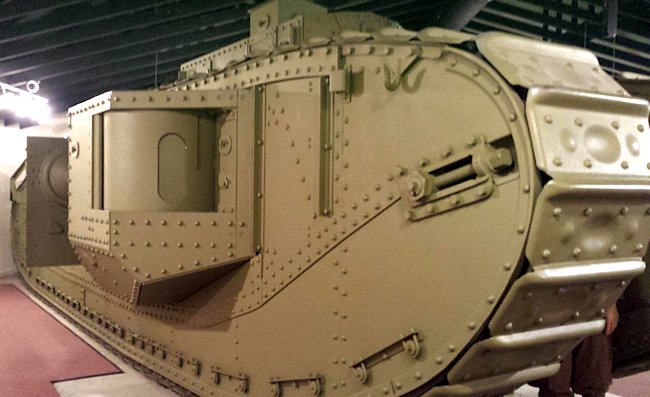
WW1 Mark VIII 'Liberty' Tank at Fort George G. Meade, MD, USA
One of the major new design features of this International Mark VIII tank was the compartmentalisation of the interior. A bulkhead was erected to separate the engine from the fighting compartment. This small but necessary enhancement made the conditions in the forward section of the tank much more conducive to human occupancy. No longer were the tank crew expected to fight their vehicle, whilst choking on the noxious fumes, being deafened by extremely loud noises coming from the engine and been overcome by extreme heat.
Side machine guns were mounted in to the rear of the main six pounder gun sponsons, one on each side of the tank fitted to the top of the side doors. Two additional machine guns were fitted to the front of the tank, one to the left and one to the right of the driver's position. Just above the top of the track to for machine guns were fitted, one either side behind the tank commanders position. One fault with this design was that there were no machine guns covering the rear of the tank.
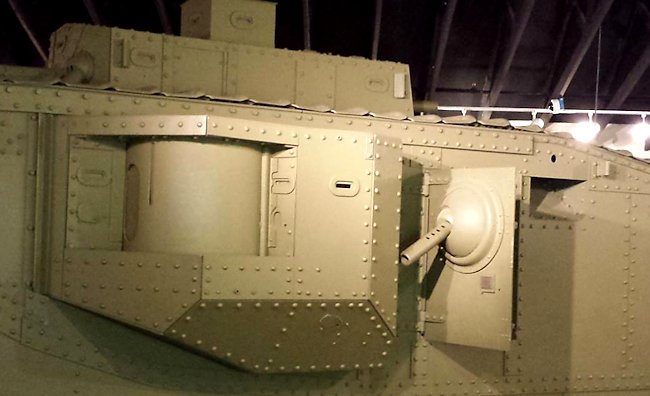
WW1 Mark VIII 'Liberty' Tank at Fort George G. Meade, MD, USA
There was a lot of room to store ammunition for the guns. The 6pdr guns had enough ammunition to fire 208 shells. The Mark VIII tank could carry 13.848 machine gun rounds before it needed to be resupplied. This vehicle was a formidable weapon on the battlefield.
If the tank was immobilised on the battlefield, it instantly became a target for artillery. Many earlier tank designs burst into flames because of the lack of protection of the fuel tanks. The tank designers of the Mark VIII tank added three 200 Imperial gallon armoured fuel tanks at the rear of the vehicle. They had listened to the concerns of the tank crews who demanded better protection. The fuel gave the tank range of 80km before having to be refueled.
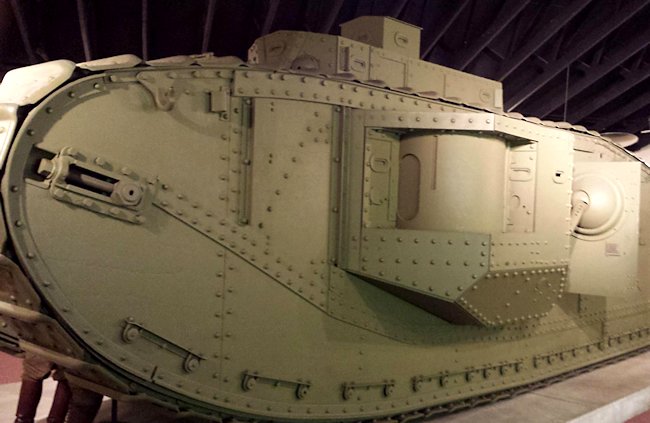
WW1 Mark VIII 'Liberty' Tank at Fort George G. Meade, MD, USA
World War One ended before the Mark VIII tank could be properly tested battle conditions. The British army never allocated any of these tanks to operational tank unit in Europe. Out of the 125 tank Mark VIII that were made only three remain.
Fort George G. Meade History
Fort Meade became an active Army installation in 1917. Authorized by an Act of Congress in May 1917, it was one of 16 cantonments built for troops drafted for the war with the Central Powers in Europe. The present Maryland site was selected June 23, 1917 because of its close proximity to the railroad, Baltimore port and Washington D.C. The cost for construction was $18 million and the land sold for $37 per acre in 1917. The Post was originally named Camp Meade for Maj. Gen. George Gordon Meade, whose victory at the Battle of Gettysburg proved a major factor in turning the tide of the Civil War in favor of the North.
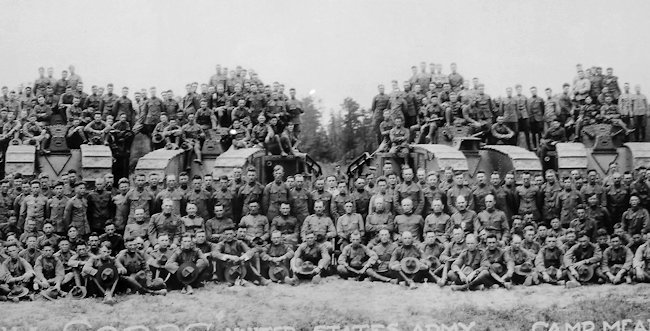
WW1 Mark VIII 'Liberty' Tank at Fort George G. Meade, MD, USA with US Army soldiers on training courses posing for a class photo
During World War I, more than 400,000 Soldiers passed through Fort Meade, a training site for three infantry divisions, three training battalions and one depot brigade. During World War I, the Post remount station collected over 22,000 horses and mules. Major Peter F. Meade, a nephew of General Meade, was the officer in charge of the remount station. Tank Crews were trained at Fort Meade on the Mark VIII tank. In 1928, the Post was redesignated Fort Leonard Wood, but Pennsylvania congressmen, angry at removing the name of native son George Meade, held up Army appropriations until the Army agreed to name the new permanent installation Fort George G. Meade on March 5, 1929.
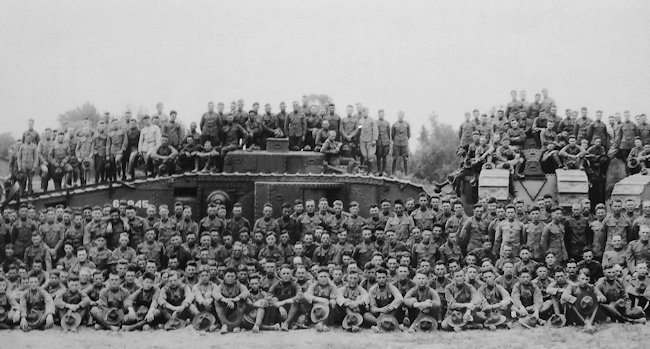
WW1 Mark VIII 'Liberty' Tank at Fort George G. Meade, MD, USA with US Army soldiers on training courses posing for a class photo
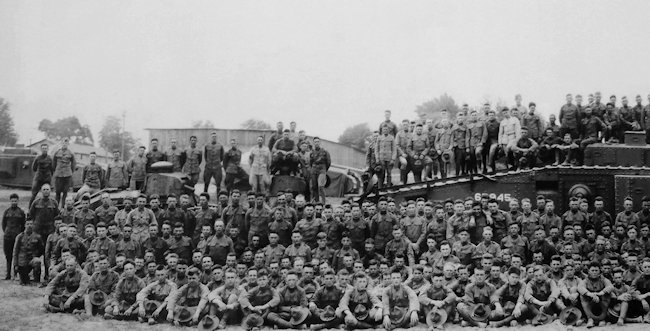
M1917 and Mark VIII 'Liberty' Tanks at Fort George G. Meade, MD, USA with US Army soldiers on training courses posing for a class photo
Where can I find other preserved WW1 Mark VIII Tanks?
- The Tank Museum, Bovington, England
- Fort Meade, MD, USA
- National Armor and Cavalry Museum, Fort Benning, GA, USA
- Source - Pierre-Oliver Buan - http://the.shadock.free.fr/Surviving_Panzers.html
WW1 Tank books
